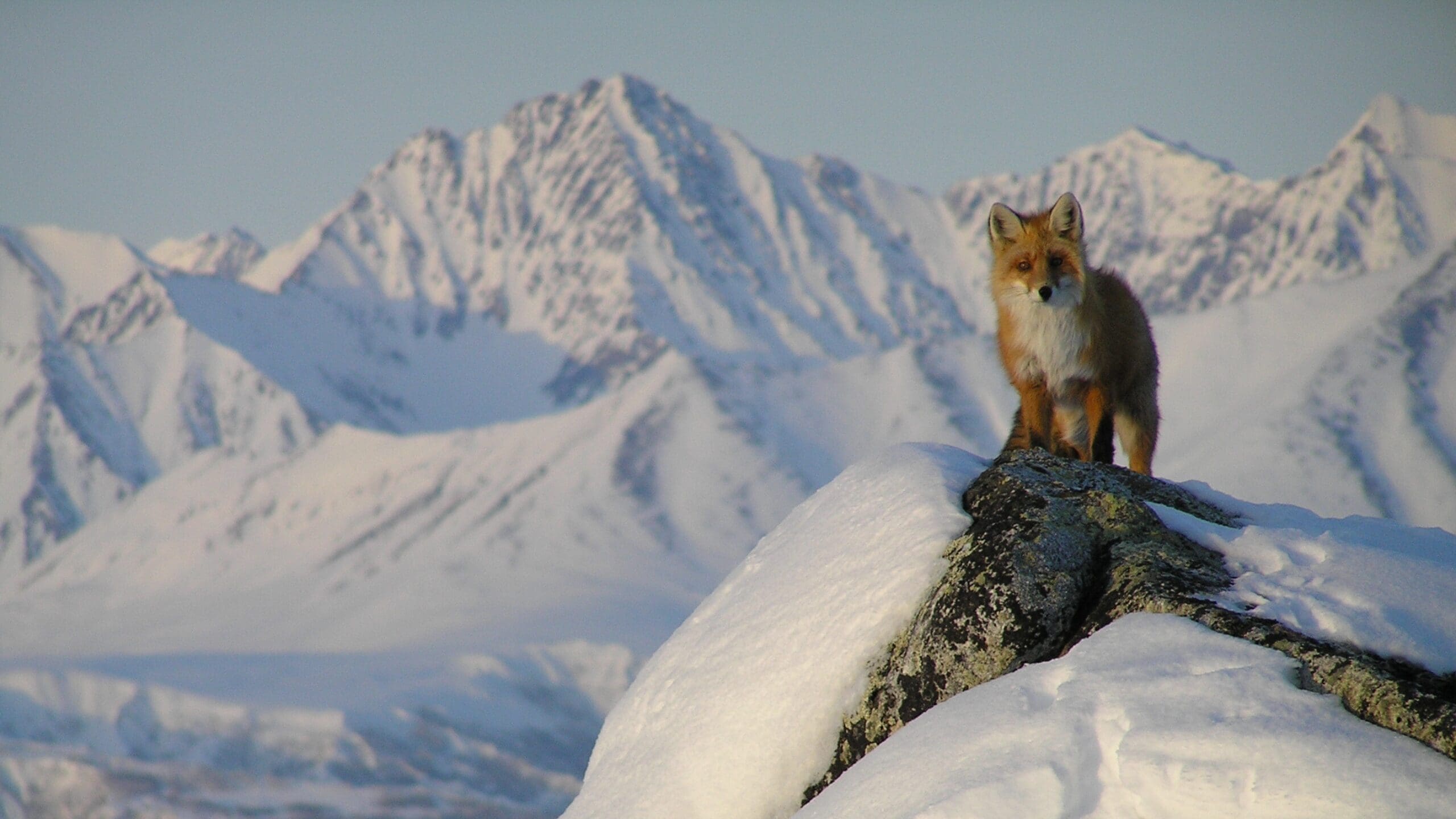Posted: May 8, 2022
Our Wildlife of the Week – 2022 Week 18…
Meet the “Red Fox”!
(Vulpes vulpes)
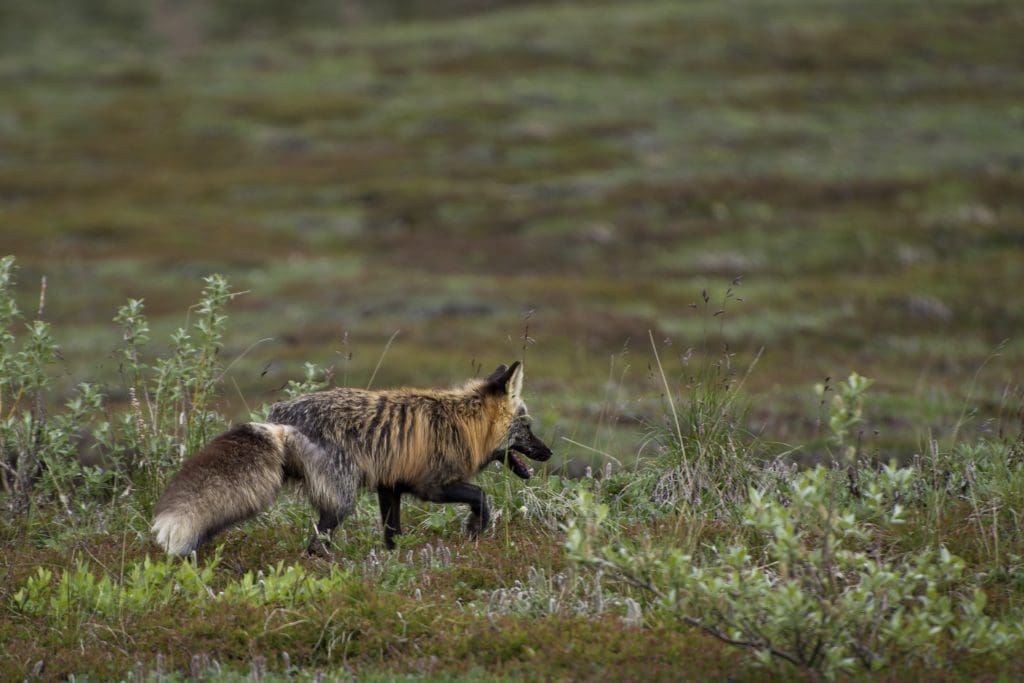
Red Fox Physical Description
Coloration of Red Foxes ranges from pale yellowish red to deep reddish brown on the upper parts and white, ashy or salty on the underside. The lower part of the legs is usually black and the tail usually has a white or black tip. Two color variants commonly occur. Cross Foxes have reddish brown fur with a black stripe down the back and another across the shoulders. Silver Foxes range from strong silver to nearly black and are the most prized by furriers. These variants are about 25% and 10% of Red Fox individuals, respectively.1
Red Foxes, like many other canid species, have tail glands. In Vulpes vulpes this gland is located 2.95 in (75 mm) above the root of the tail on its upper surface and lies within the dermis (skin) and subcutaneous (under the skin) tissue. The eyes of mature animals are yellow. The nose is dark brown or black. The tooth row is more than half the length of the skull. Molar structure emphasizes crushing. The manus (the end of a forelimb, corresponding to the hand and wrist in humans) has 5 claws and the foot 4 claws. The first digit, or dew claw, is rudimentary but clawed and does not contact the ground.1
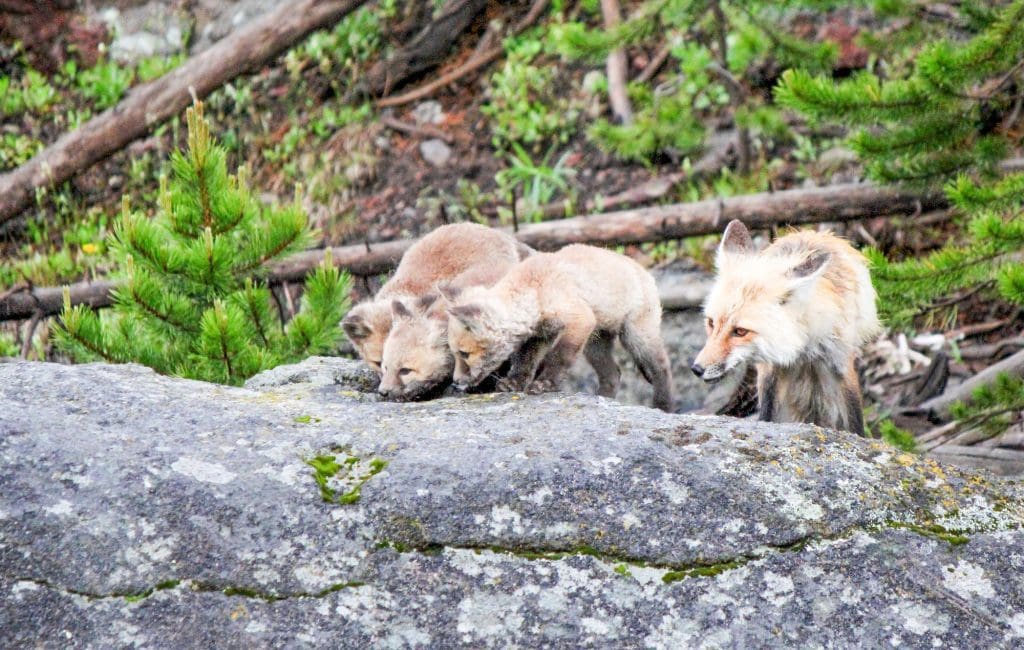
Red Foxes are the largest of the Vulpes species. Head and body length ranges from 17.91 to 35.4 in (455 to 900 mm), tail length from 11.8 to 21.9 in (300 to 555 mm), and weight from 6.6 to 30.9 lbs (3 to 14 kg). Males are slightly larger than females. Populations in southern deserts and in North America are smaller than European populations. Body mass and length among populations also varies with latitude (being larger in the north, according to Bergmann’s rule).1
*Bergmann’s Rule, in zoology is the principle correlating external temperature and the ratio of body surface to weight in warm-blooded animals. Birds and mammals in cold regions have been observed to be bulkier than individuals of the same species in warm regions. The principle was proposed by Carl Bergmann, a 19th-century German biologist, to account for an adaptive mechanism to conserve or to radiate body heat, depending on climate.3
SPONSORED ADVERTISEMENT
Red Fox In Action
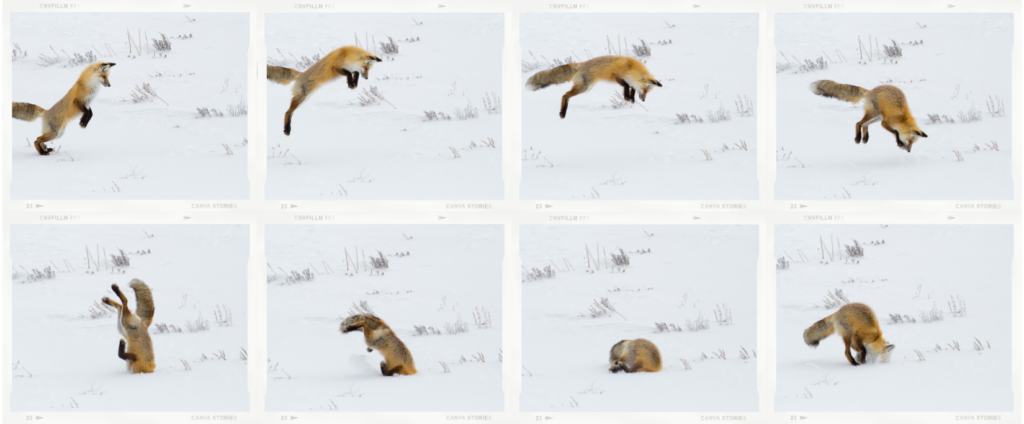
Red Foxes are solitary animals and do not form packs like wolves. During some parts of the year adjacent ranges may overlap somewhat, but parts may be regularly defended. In other words, Red Foxes are at least partly territorial. Ranges are occupied by an adult male and one or two adult females with their associated young. Individuals and family groups have main earthen dens and often other emergency burrows in the home range. Dens of other animals, such as rabbits or marmots, are often taken over by foxes. Larger dens may be dug and used during the winter and during birth and rearing of the young. The same den is often used over a number of generations.1
Pathways throughout the home range connect the main den with other resting sites, favored hunting grounds and food storage areas. Red Foxes are terrestrial (living on or in the ground) and either nocturnal or crepuscular (active primarily during the twilight period). Top speed is about 30 mph (48 kph) and obstacles as high as 6 feet (2 m) can be leapt. In the autumn following birth, the pups of the litter will disperse to their own territories. Dispersal can be to areas as nearby as 6 miles (10 km) and as far away as almost 248 miles (400 km). Animals remain in the same home range for life.1
SPONSORED ADVERTISEMENT
Where to Spot Red Fox
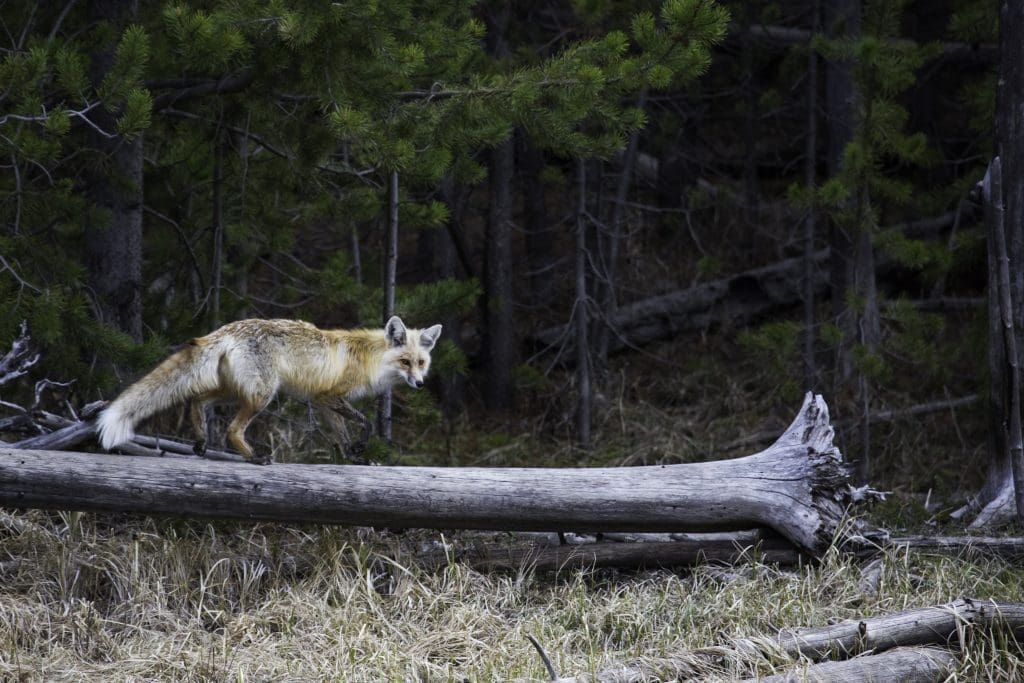
Red Foxes utilize a wide range of habitats including forest, tundra, prairie, desert, mountains, farmlands, and urban areas. They prefer mixed vegetation communities, such as edge habitats and mixed scrub and woodland. They are found from sea level to 14,763 feet (4500 meters) in elevation.1
Red Foxes are found throughout much of the northern hemisphere from the Arctic circle to Central America, the steppes of central Asia, and northern Africa. This species has the widest distribution of any canid. Red foxes have also been introduced to Australia and the Falkland Islands.1
The Red Fox can be found in over 44 National Parks and many other National Park Service sites.2 Including:
- Acadia National Park
- Arches National Park
- Badlands National Park
- Black Canyon of the Gunnison National Park
- Bryce Canyon National Park (April 2021 – Park of the Month)
- Canyonlands National Park
- Capital Reef National Park (September 2020 – Park of the Month)
- Congaree National Park
- Crater Lake National Park
- Cuyahoga Valley National Park
- Denali National Park & Preserve
- Everglades National Park (March 2022 – Park of the Month)
- Gates of the Arctic National Park & Preserve
- Glacier National Park
- Glacier Bay National Park & Preserve
- Grand Teton National Park (May 2021 – Park of the Month)
- Great Basin National Park
- Great Sand Dunes National Park & Preserve
- Great Smoky Mountains National Park
- Hot Springs National Park
- Indiana Dunes National Park
- Isle Royale National Park
- Katmai National Park & Preserve
- Kenai Fjords National Park & Preserve
- Lake Clark National Par & Preserve
- Lassen Volcanic National Park
- Mammoth Cave National Park
- Mesa Verde National Park
- Mount Rainier National Park
- New River Gorge National Park & Preserve (February 2021 – Park of the Month)
- North Cascades National Park (April 2022 – Park of the Month)
- Olympic National Park
- Petrified Forest National Park
- Redwood National & State Parks
- Rocky Mountain National Park
- Sequoia & Kings Canyon National Parks
- Shenandoah National Park (November 2020 – Park of the Month)
- Theodore Roosevelt National Park
- Voyageurs National Park
- Wind Cave National Park
- Wrangell – St. Elias National Park & Preserve
- Yellowstone National Park
- Yosemite National Park
- Zion National Park (December 2020 – Park of the Month)
SPONSORED ADVERTISEMENT
Red Fox Conservation Status
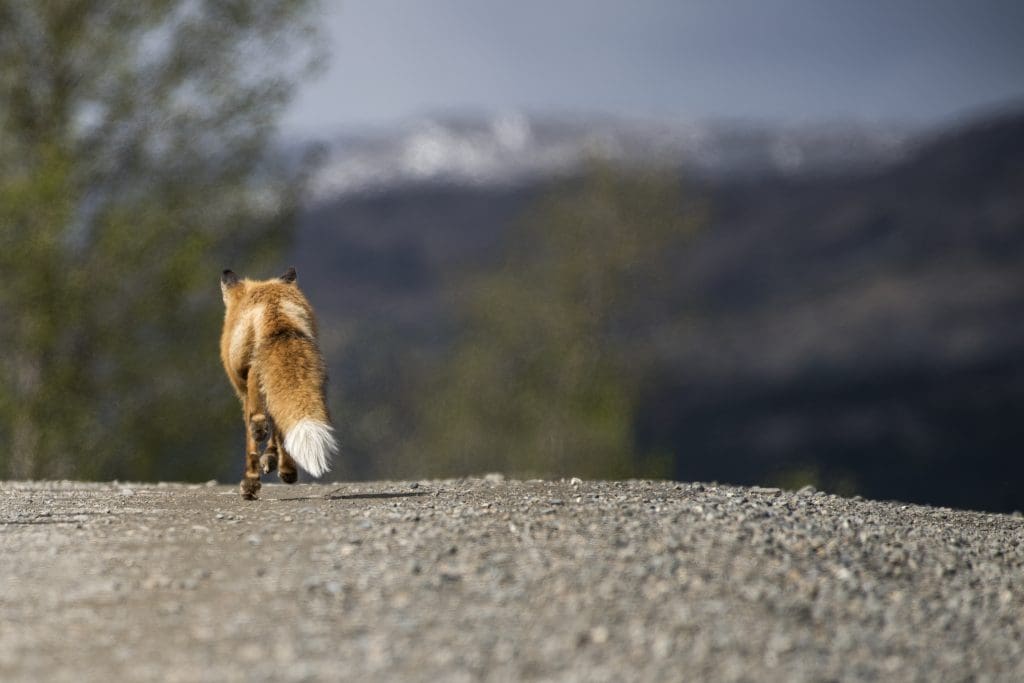
Three subspecies of Red Foxes are listed in CITES (the Convention on International Trade in Endangered Species of Wild Fauna and Flora) appendix III. All three subspecies are located in India. Overall, Red Fox populations are stable and they have expanded their range in response to human changes in habitats.1
Red Foxes help to control populations of their prey animals, such as rodents and rabbits. They also may disperse seeds by eating fruit.1
Red Foxes are important fur bearers and more are raised on farms than any other wild fur bearing mammal. Red Foxes are considered by many to be threats to poultry. In general, foxes hunt their natural prey, but individual foxes may learn to target domestic birds if they are not adequately protected. Foxes are known vectors for rabies and can transmit the disease to humans and other animals.1
Red Fox and You
Have you seen a Red Fox in it’s natural environment? Tell us about it in the comments below!
Do you have a picture of these amazing creatures? Share it on social media with us and tag us in your post.
Use the hashtag:
#WildlifeOfTheWeek.
Interested in Wildlife Photography???
Check out this amazing beginners guide from National Geographic:
National Geographic Photo Basics The Ultimate Beginner’s Guide to Great Photography
The above links are provided in this article as affiliate links. Meaning, at no additional cost to you, we’ll earn a commission if you click one and make a purchase. An easy way to help support us if you’re going to buy anyway!
Learn more about all the amazing wildlife in our National Parks and how to safely “Watch Wildlife” on this amazing page with lots of resources from the National Park Service!
Want tips for photographing wildlife? Check out this great article for tips from the National Park Service.
Help support Discover Our Parks by becoming a Patron for as little as $1 a month! Your support will help us continue to provide articles like this and add even more information about our parks to this site.
If you want to make a one-time donation, buy us a coffee!
‘We got some of the above information from the following:
1: Animal Diversity Web – Vulpes Vulpes – Red Fox
2: NPSpecies – Find Parks Where a Species is Found
3: Britannica – Bergmann’s Rule
Check out these recent posts from Discover Our Parks:
- The Isolated Black-bellied Salamander: Wildlife of the Week – 2023 Week 22

- The Splendid Sandhill Crane: Wildlife of the Week – 2023 Week 21
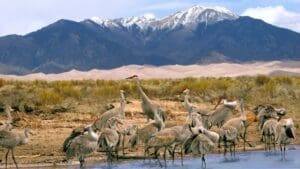
- The Promising Peregrine Falcon: Wildlife of the Week – 2023 Week 20
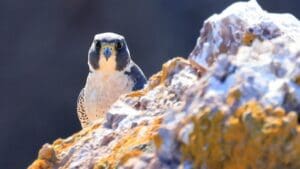
- The Intimidating Killer Whale: Wildlife of the Week – 2023 Week 19

- The Swift Fox: Wildlife of the Week – 2023 Week 18
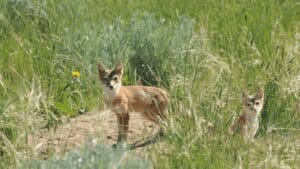
SPONSORED ADVERTISEMENT

